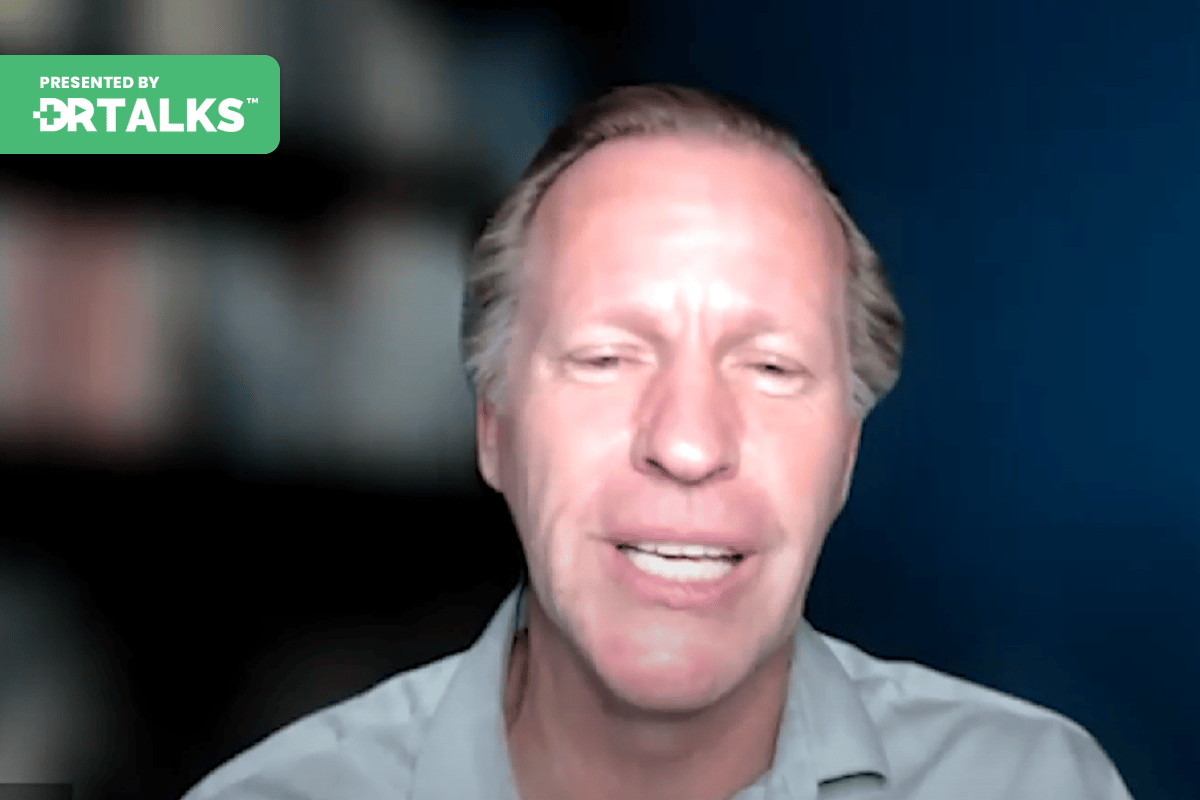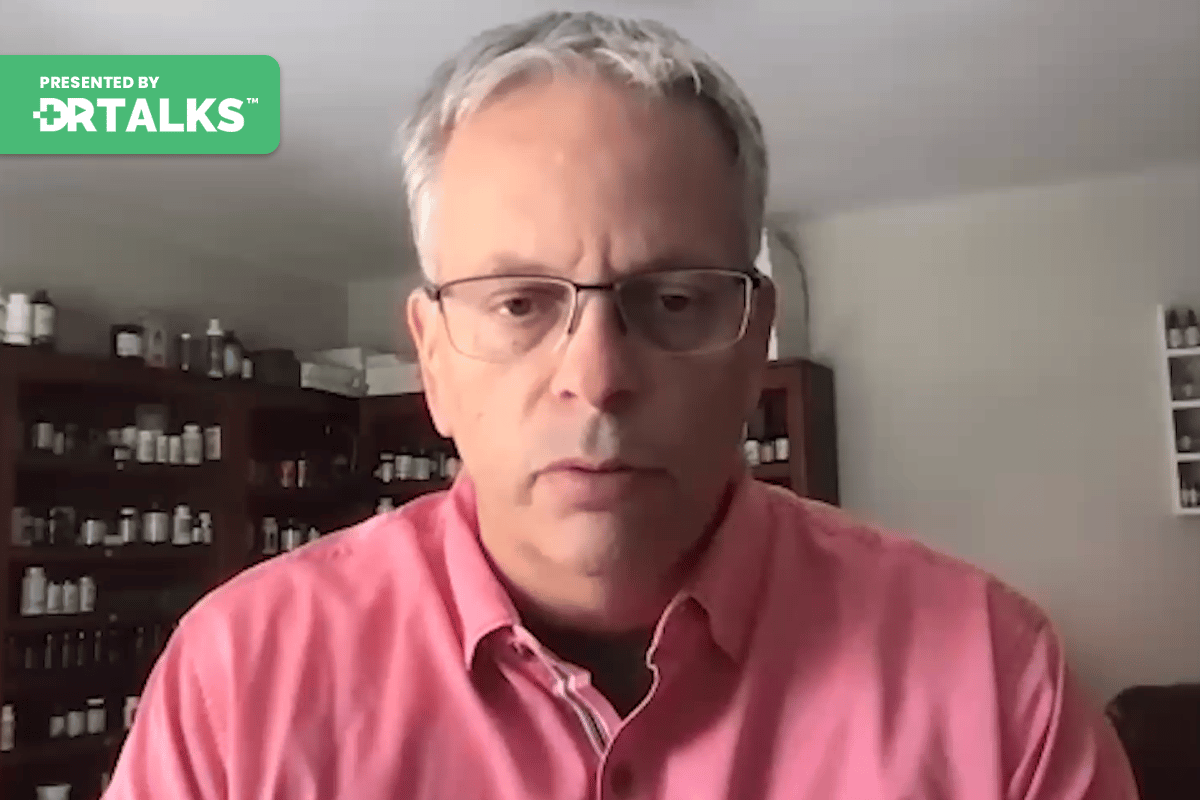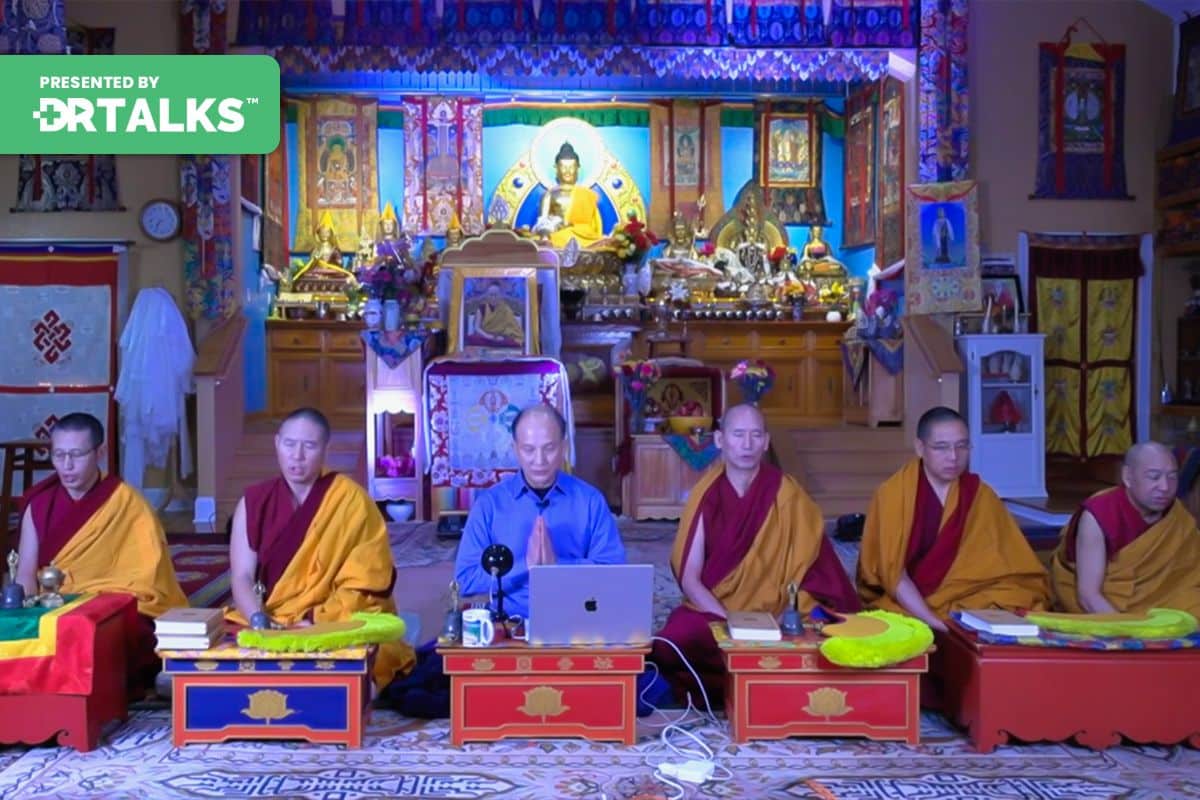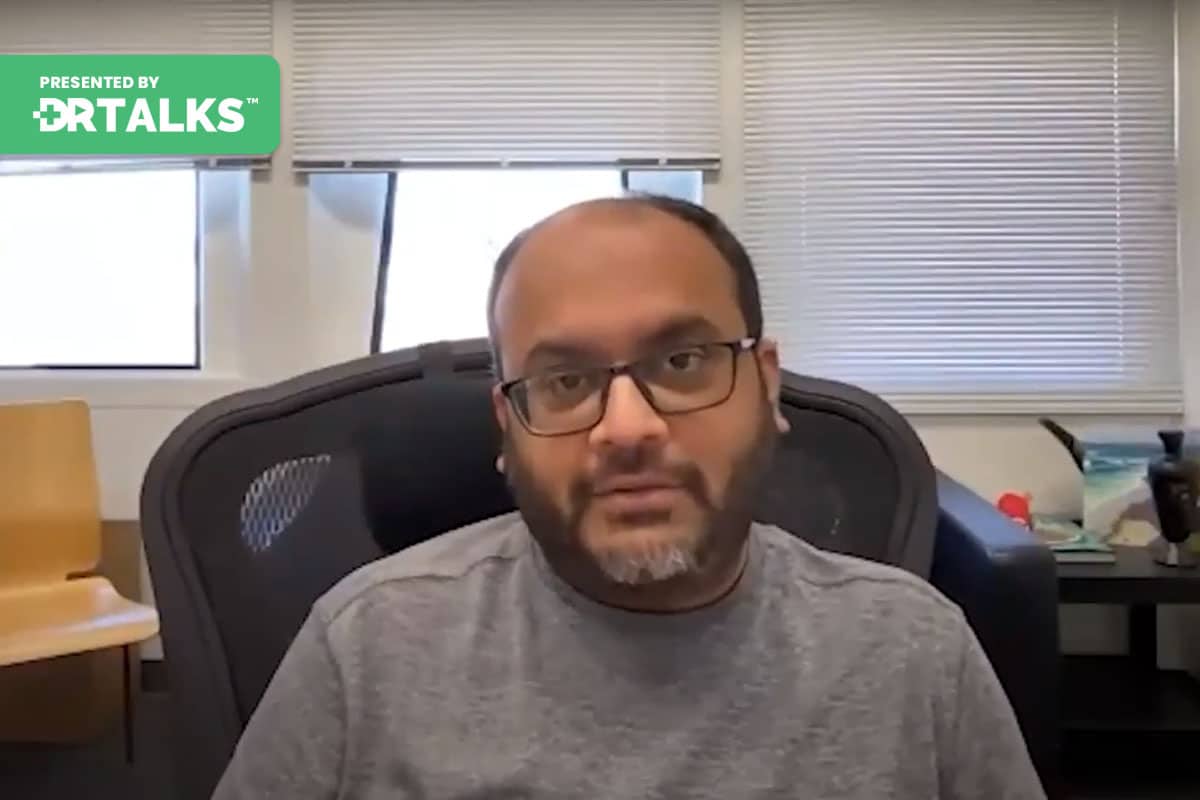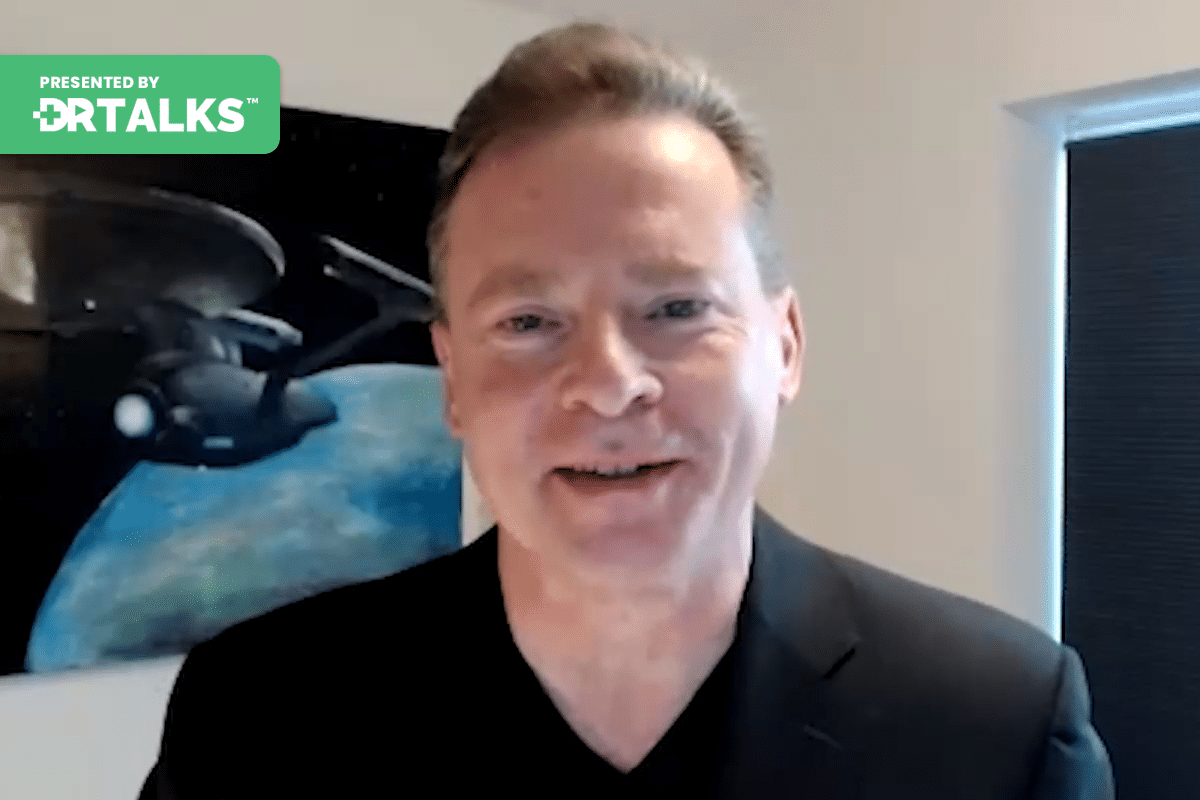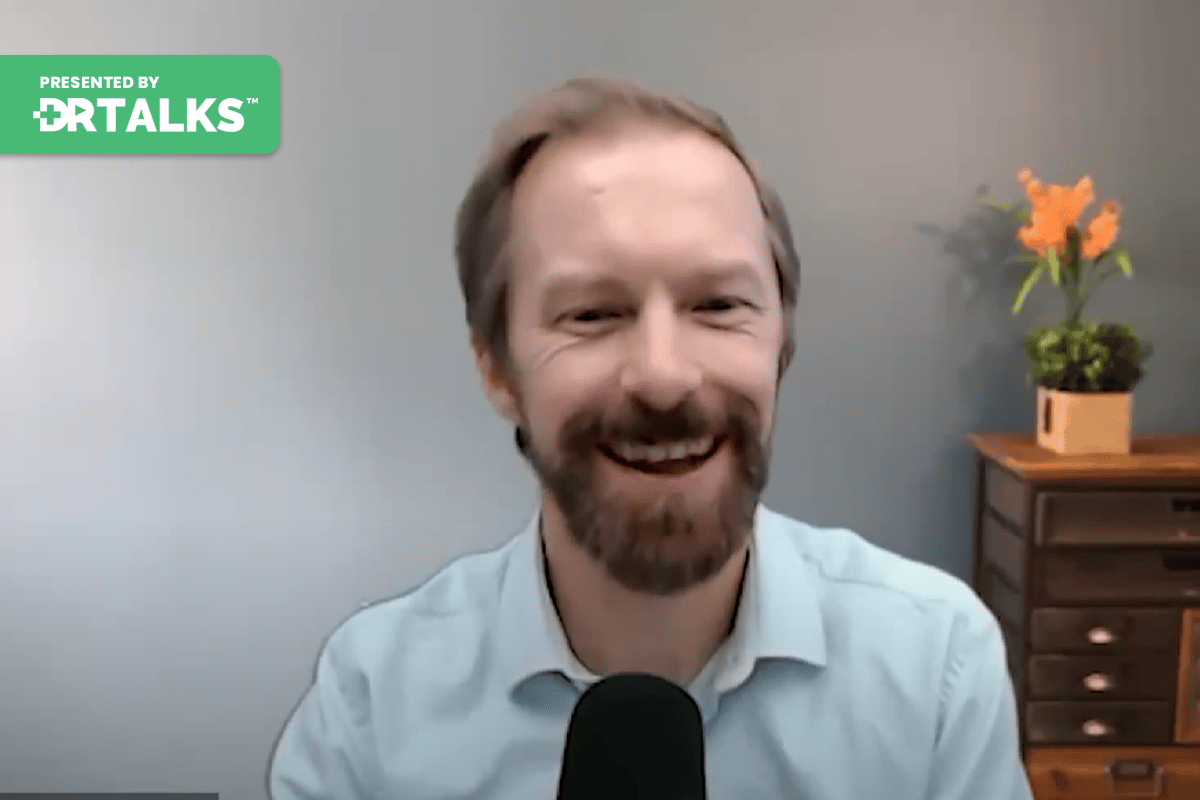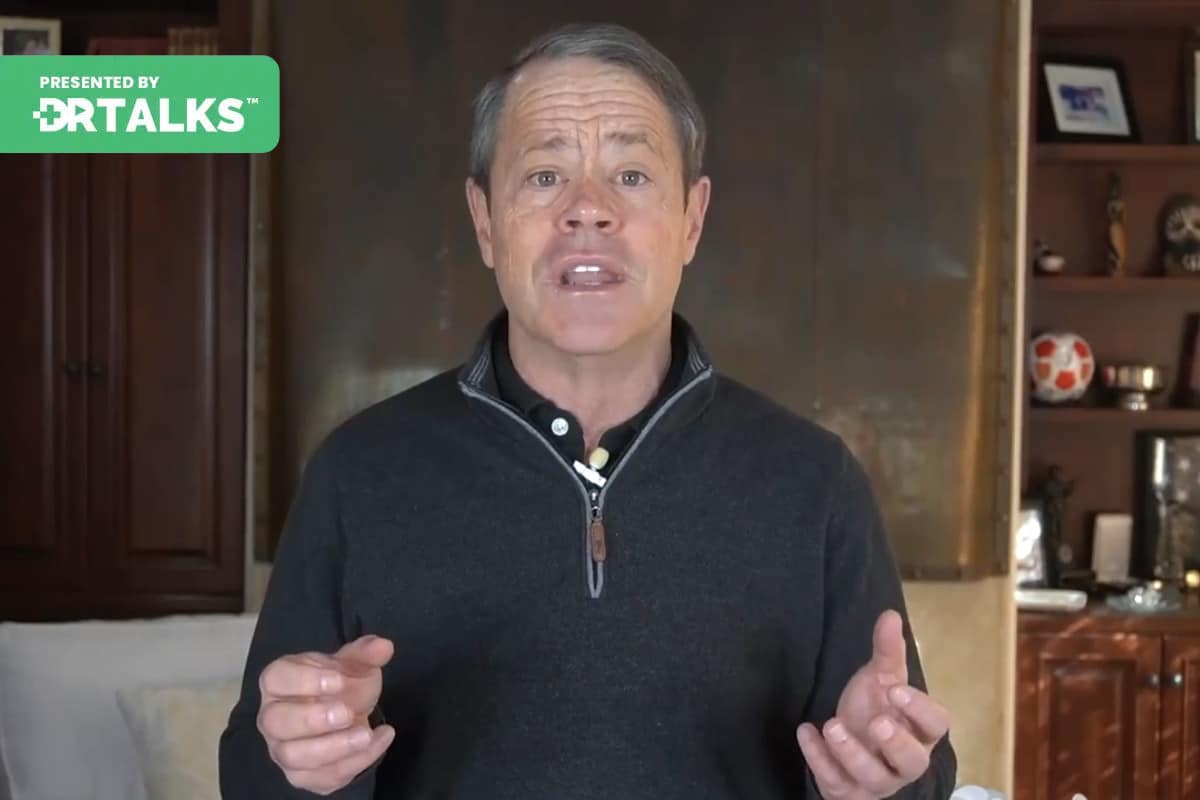Join the discussion below
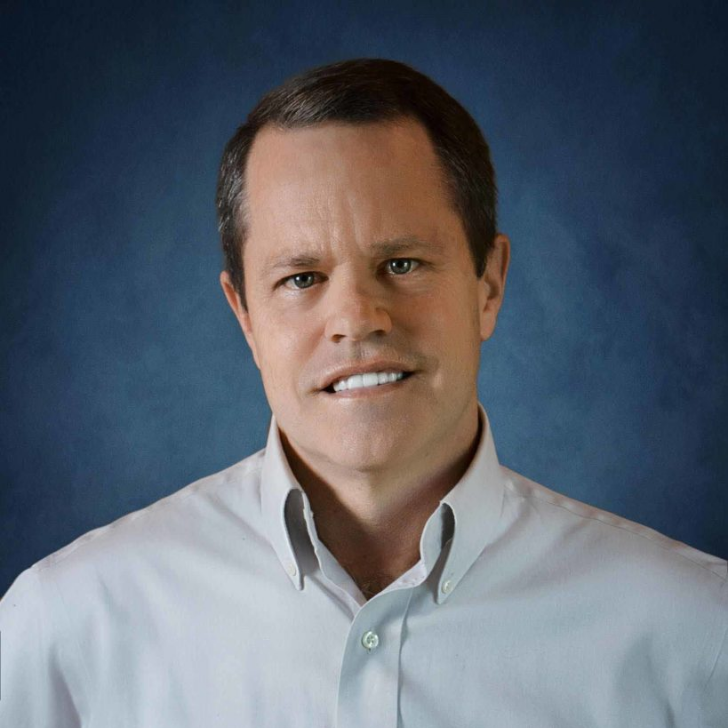
Tom McCarthy is a husband, father, author, speaker, entrepreneur, and investor who has owned businesses in the training, software, financial services, and restaurant industries. Tom’s clients in his training business include some of the worlds leading companies such as Cisco Systems, Microsoft, Salesforce, Wells Fargo, and MetLife. His latest book,... Read More
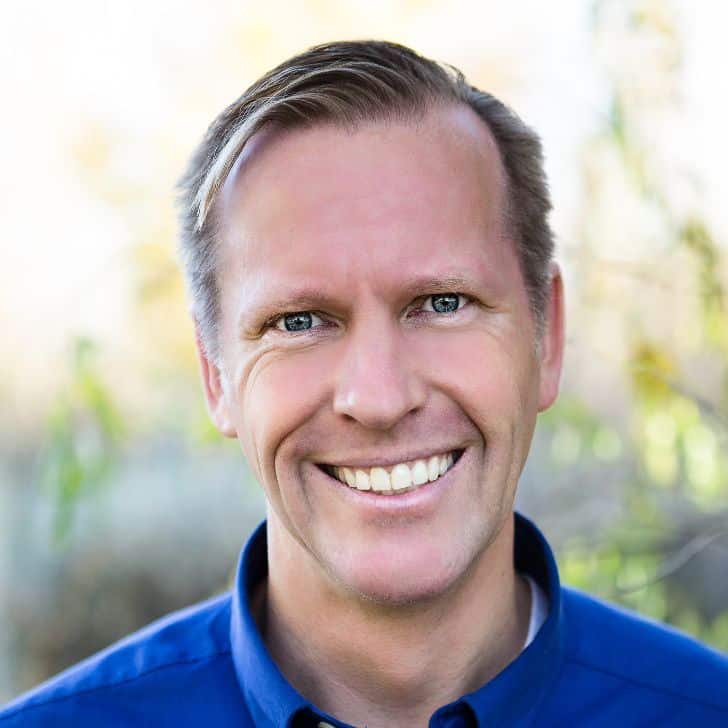
Michael Karlfeldt, ND, PhD, is a Board Certified Naturopath (CTN® ) with expertise in IV Therapy, Applied Psycho Neurobiology, Oxidative Medicine, Naturopathic Oncology, Neural Therapy, Sports Performance, Energy Medicine, Natural Medicine, Nutritional Therapies, Aromatherapy, Auriculotherapy, Reflexology, Autonomic Response Testing (ART) and Anti-Aging Medicine. Dr. Michael Karlfeldt is the host of... Read More
- Cancer is a loss of identity
- 5 elements – what they are and how can be supported
- Living a 5 element focused life
- Therapies to activate the 5 elements
Related Topics
EnergyTom McCarthy
I’m super excited about. My next guest. He’s somebody that I got a chance to meet down in Florida earlier this year when we had a holistic leadership council, a group that I’m a member of, We had a meeting and our next guest was there and he made a big impression on me. Not only is he an amazing doctor, but he’s also a really, really cool human being and you’re gonna get to see that as we go through the interview. His name is Dr. Michael Karlfeldt he’s a natural path also as a PhD and he’s been in clinical practice since 1987. So he’s probably almost as old as I am. He runs a busy, multi discipline integrated medical center called the Karlfeldt Center in Boise Idaho and you’re gonna hear by his accent, he’s not originally from there, and maybe we’ll even figure out how he got there. But he also hosts tv shows the Doctor Michael show, a show called True Health, Body, Mind and Spirit, and a radio show called Health made radio, where he connects with international leaders in the Integrative Health Arena and he’s also just an amazing human being. As I said, he’s on podcast, he’s all over the place because he’s that good and everyone wants him and we got him for you right now. So Michael is welcome. It’s really great to have you here.
Michael Karlfeldt, ND, PhD
Oh, thank you so much. All of a sudden I feel a whole lot better about myself after that introduction.
Tom McCarthy
So tell everybody where you’re originally from, cause I kind of, I said, you know with the accent they might pick up that you’re not originally from Boise, but where are you originally from?
Michael Karlfeldt, ND, PhD
Yeah, actually from Stockholm Sweden and yeah, it’s one summer time. If you ever have a chance to go down old town Stockholm and you go to these kind of Houses are from the 1100s and then cobblestone. It’s just the coolest fielding during summer time. So yeah, my heart is still there even though I love the United States. Yeah, it’s fantastic.
Tom McCarthy
Yeah. And I’ve actually been on those little cobblestone streets. It really is amazing. So we’re gonna talk about healing cancer with the five elements and, and I know working with cancer patients and helping them heal is one of your passions. It’s, it’s, it’s part of your expertise, also working with Lyme patients and I’m sure many other things. But the five elements. I’m curious what are these five elements that we’re talking about in terms of healing and even preventing cancer.
Michael Karlfeldt, ND, PhD
So, one of the issues and we’ll get into a little bit more about what cancer is. But a lot of times we tend to get stuck kind of in the weeds and we don’t see the full scope, you know, that we don’t see the forest. And so when you’re looking at cancer, you want to make sure you get the foundational pieces right and the energies that drive us, who are we and how we connect with the environment around us and there you look at the basic basic components. You know, we got obviously we get air, you know we got water, we got earth, we got fire and then we have spirit, you know, so we so we have these components that that drives that energy is what drives us and what supports us and moves us forward. And the key is sent to balance these components because I mean we are looking at deficient vitamin B or deficient in this mineral or that or so forth. And we try to find that one magic bullet but we forget that maybe we are just efficient in water. Maybe we’re just deficient in oxygen or in light or in spirit or you know the components that our bodies are made out of, you know that structure. So it is important to look at these foundational components when you’re then dealing with something as severe as cancer but it’s for anything. I mean if you want to deal with regenerative medicine, you want to look at the basic foundation and then build up on there and then you can be successful in what you do.
Tom McCarthy
Yeah. So how do you look at cancer? Like what is cancer to you when you look at somebody obviously it’s you know to a patient it’s super scary. It’s you know, some of them equate like you know, potentially being a death sentence. How do you look at cancer when the patient shows up.
Michael Karlfeldt, ND, PhD
So their cancer is a multifactorial disease. So you can look at it when the body is trying to compensate in so many different ways and it gets the point where it just can’t compensate anymore and it shifts into a survival pattern. So that’s survival pattern because every cell, every organism everyone wants to survive. I mean that that’s a that’s the basics of of nature and there’s nothing different with cells where they then shift from the way the normally function, which is then using energy using oxygen in order to be able to produce energy using the mitochondria for that process and then controlling, you know, the repair of that cell and when the cell is not healthy, then it has a cell death switch, let’s clean off the cell. So we can make new ones. You know, we get rid of the old shoes so we cannot wear new shoes. You know, it’s the same thing with the cells.
But then if it gets to a point where that cell gets more damaged and it’s under a lot of stress and it can’t handle the kind of environment it is, it shifts away so it’s almost like a a loss of identity that it’s it’s losing its connection with its environment and losing the connection with how it’s how it’s functioning, you know within the body and so it starts then go rogue and and develop energy in a different way and then develop tissue in a different way that is not as organized and is not connected with its environment. So to me you can look at all these different cancer drivers, you can see what was it this chemical, was it that pathogen was it because I was nutritional deficient, was it because I emotionally dealing with trauma and all these are root causes. But the end of the day, all those stresses and stressors put that sell or that tissue in a place where it has them to disassociate with the being as a whole and feel like it then having to function on its own. So the key is I mean I think the ultimate key is then to really connect you know, make sure that each part of you is connected and that each part is loved. Each part is fueled with that energy that should flow through your body. And by doing that then the cancer cells can feel like you can then start to integrate again into the hole into the complex which is your organism. That is a representation of how we interact with the world. So I think a lot of times when we have relationships that are dysfunctional or how we interrelate with the world, then we become a microcosm of that and and and cancer and that way than start to behave like we do in relationship with what’s greater around us.
Tom McCarthy
That’s a beautiful description and very unique. I love the way that you just talked about that. So it’s a loss of identity. It’s like cells feeling separate and and then you said part of the way that people hell is reintegrating those cells back into the hole where everything is functioning and it’s holistic. That’s pretty amazing. And with cancer, I mean the thing that you know, people have to understand is that cells are come and going all the time. Right? So the fact that somebody has cancer or meaning they have cancer cells doesn’t mean that those same cancer cells are there for the next you know, two months or three months. I mean it has to be they have to have that continued loss of connection and feel separate for that for that to continue. But if they get really if that part gets reintegrated in there can be a healing. Is that correct?
Michael Karlfeldt, ND, PhD
Absolutely. And the key with that is then to obviously not look as cancer as the enemy. You know, something to attack. Because here you have a another thing that cancer sometimes is called this is the wound that never heals. So the key isn’t to bring healing to that area to bring energy to that area. So that that area then can then integrate again and it can feel safe. It’s kind of like a wounded child that isolates itself. So if we give that the glove and the nurturing and they can then integrate again into the hole and then cancer can then he’ll and and this has been seen many times.
Tom McCarthy
Well, that’s just such a cool way of thinking about it because so much of the way that cancer is being treated in the mainstream is, you know, we’ve got to get in there, we’ve got to attack it. We’ve got to, you know, f cancer. We gotta beat cancer all these different things and you’re really looking at it in a different way where it is like a wounded child. We’ve got to reintegrate that back in. And I I think that is a way more effective and empowering way to look at it versus like there’s an invader inside me, you know, I’m I’ve got to fight it. I’ve got to stress out all the time. I think it creates probably more stress and probably lessens the chance that someone’s going to heal.
Michael Karlfeldt, ND, PhD
Absolutely. You get yourself in that survival mode, you know, fight or flight mode. And what you’re doing then is that you are producing more cortisol, you’re producing stress hormones which suppress the immune system which will trigger and triggers more inflammation and cancer is an inflammatory process. And so you’re continuing kind of fueling the fire by being in that state of stress. And a lot of patients say you want to have that certainty because here you have obviously you’re finding something, it’s a deadly disease and everyone gets obviously anyone gets scared if you are facing death. So the dichotomy is that by being scared of facing death or trying to do everything you can to stop death from occurring, You put yourself at a place where you’re less likely to succeed.
Tom McCarthy
Yeah. Less likely to live. Exactly.
Michael Karlfeldt, ND, PhD
Yeah. So, so it’s almost like you have to let go of that fear of death and let go of the death and not that you don’t care. I mean that you don’t care that whether I live or die, but be at peace in who you are and be at peace in where God placed you and you know what, what your future will hold because nobody can control their future, but you can control this moment and being at peace in this moment will then put you at a place where you are much more successful in succeeding while you’re dealing with something as severe as cancer?
Tom McCarthy
That’s a great way of thinking about it. I know it’s hard for people to do that though. How do you help people do that? Like make that shift in their mind the way that you just talked about.
Michael Karlfeldt, ND, PhD
There are different techniques that you can use. But a lot of times it is that you look at belief patterns, you look at you know traumas that may place them in where they’re at, you also look at how they are connected with, where with something greater and if you think that you are alone ice isolated and all the power exists just within my ability to create a future and then you you won’t be able to let go that fear. So you need to find whatever that greater is that you can believe in whether you’re christian, whether you’re a buddhist, whether whatever it may be so that you then become part of something that is just greater than yourself. I mean I think that’s the key and that that’s when we’re talking about the five elements. That’s that spirit component that you need to have that connection and and and and that’s key.
Tom McCarthy
So the five elements you really want all five functioning and balance right like three out of five, you know that’s probably not ideal right?
Michael Karlfeldt, ND, PhD
Three out of five, What’s that? Is that a C. Or is that what you get 60%? Yeah well not even that A. D. So yes you do want to focus on all five I mean and you want to, if you don’t want to simplify it because when you when you’re then diagnosed it’s like you have to drink from a firehose. You have to try to figure out, you know what what should I take ray she or or turkey tail or you know should I take categorical or papa or you know do Kelly’s protocol or Gerson’s or I mean see ketogenic diets, you try to kind of figure out all these different things you know what is best for me and so if you instead of trying to get overwhelmed with all these different details and then focus on the greater hold and say well the five elements you know what are they you know so these I can control so I can then look at the spirit which is my connection connection to something greater and then also just the spirit that flows through all of us you know, so I can focus on that and feel connected in that way.
I can focus on water. You know I will drink good quality water, I will drink plenty of it you know, so I not that I can focus on, I’ll focus on on fire, you know light you know and and these are different therapies I mean like for instance if a person comes in, we offer like intravenous light therapy, you know, so we’ve actually a photo therapy where we can kind of blast about and really fuel refuel the body with light but simple things obviously it’s just be out in the sunshine and you had temples that were built for for the sun hell your temple where people would go and they would be healed just using sunlight so it’s just refueling yourself with that or with with earth. I mean those are the nutrients that we eat. You know are we eating food that support the body to be able to produce tissue is a good quality protein, good quality nutrition. You know what we’re doing so that we can really kind of support the minerals and the vitamins and the phytochemicals and all the enzymes and all the different processes that takes place in the body. And then air oxygen we need all need oxygen. I mean we we know that in the cancer tissue there’s oxygen starvation so there’s a decrease in the production of energy. So they’re looking at cancer as being more of a metabolic disease and a genetic disease. So what can I do then? I mean I should be out in nature, I should breathe good air. I mean there are therapies that we offer like you know hyperbaric oxygen therapy or intravenous ozone therapy or you know other type of exercise with oxygen therapy. So there are a number of different things that can be used to support these if you’re very deficient. But then just kind of looking at the basic lifestyle patterns and then you know just owning in on those five components and then you have a fantastic start.
Tom McCarthy
And these are all things you do in your clinic, everything you discuss like hyperbaric and ozone and and all these things you do in your clinic.
Michael Karlfeldt, ND, PhD
We do all of these things and it’s really cool. I mean one of the components, you know, talking about the light. Yeah, we do something called photodynamic therapy where we use light to actually that the cancer cells can’t really handle that concentration light. So the cancer cells and becomes oxidized, you trigger them to actual die off. But the healthy cells they will feed on that light and it will turn on the energy production within the cells. So within the cell you have these little energy factories called mitochondria. And when you then have the light spectrum that hits these mitochondria then they actually turn on the different complexes. You know there are the different station and sort of say within the mitochondria to move electrons through. You know that shame to produce energy. So it really kind of produce tissue regeneration. And we also know that the mitochondria holds the cell death switch which means that if it is functioning well it will then trigger apoptosis or kill off that cancer cell if it is dysfunctional. So it is fantastic both for going after the cancer and then supporting healthy cells to stay healthy.
Tom McCarthy
How do you get light into? I’ve heard of most of your different treatments but that one’s interesting how do you get light into the veins? How do you do that?
Michael Karlfeldt, ND, PhD
Yeah, it’s really fascinating. We have a machine. It’s called the Weber laser machine and it’s designed in a way so that you’re able then to put an optic cable into your vein and then you hook that up to the different parts of the spectrum. So I have ultraviolet you know I got blue you got green yellow red infrared and you and so as the blood then passes by so you have this optic cable you know in your vein. So as the blood passes by it continually gets treated by that light. Yeah so the red blood cells you know pick that up and then and kind of transfer that energy you know those photons transfer that energy and disperses that throughout the body. And so you can treat your blood and the blood will pass through that spot you know once every once every minute. So you’ll treat your whole blood volume like 60 times you know through an hour. So you can really kind of blast your internal, you know with the light and just let the red blood cells distribute it and it will increase your nitric oxide, it will increase your serotonin and activate your immune system. And they found that even like the blue light that increases the length of the telomeres. You know so it’s anti aging and you know so it’s it’s really.
Tom McCarthy
Like something everybody should do. Not just somebody who’s who’s who’s ill.
Michael Karlfeldt, ND, PhD
No no I mean it’s it’s a fantastic regenerative therapy if you’re not dealing with cancer, because it’s it’s just, you know, like, I mean, like I said, nitric oxide is directly connected to anti aging and then telomeres, you know, that is, you know, the faster they degrade the, you know, the closer we get to when we are birth certificate expires. So if we can prevent that or reverse that in some fashion, then obviously we it’s good for everybody.
Tom McCarthy
I love it. How did you make helping cancer patients one of your specialties? What made you focus in on that area?
Michael Karlfeldt, ND, PhD
So it’s for a number of reasons, I mean, one my dad passed away from cancer, you know, so, so that makes it personal. And secondly, is that, yeah, I’ve been doing this for a long time. And one of the riddles that people come in and struggling with the most and and scared and there doesn’t seem to be any kind of medical resolutions to is cancer. So, you during all these years that I’ve been practicing, I’ve been seeing hundreds of hundreds of thousands of patient interactions. And and and seeing then that there’s really no change in the medical profession and in solving this issue. So, the only solution then, from my point of view is that we need to look at it differently. And we’re starting even the medical community is starting to look at it a little bit differently. Instead of looking at it as a genetic disease, they’re starting to look at it as a metabolic disease and you know, where you are then, you know, seeing how the metabolism of the cell, this is changed and and and that is what then turns it into cancer. So, I just fell in love with being able to create, you know, support a person to be able to have solutions or have options where options did not exist. You know, where the only options they had was, you know, cut burn or you know, or poison, you know, those are the only options. There’s been a couple more. I mean, now we have immunotherapy and then we have hormone therapy, you know, so but there hasn’t really been any advances and there hasn’t been any really studies show that when people come and do medical therapy and do all these things that on average people live about 22 to 3 months longer, you know, by doing all these things. So I love to see when you’re able to impact a person, a shift, you know, shift that from being hopeless another alive. You know, And so that with my personal story is really why I fell in love with this.
Tom McCarthy
That’s an amazing statistic that you just said. So they get cut, they get burned right with radiation or they get poisoned with chemotherapy and then you live a couple of months longer. But it’s probably not a joyful couple of months, right? You know, when you’ve your bodies been, you know, injected and from well meaning physicians, I mean, they’re just trying to do what what everyone’s trying to do help people heal, but the tools are destructive and what you tend to use our tools that are constructive, you know, their destructive obviously to the to the wrong type of cells, but but they really are not as, you know, they’re not burning or poisoning or things like that. I really love that. That’s really a cool way of looking at it. And so many people are just going down a route because it’s what they’ve been told they need to do and it’s gonna be painful, it’s gonna be no fun and they may live a couple months longer from doing it, you know, versus really going in and finding a way to not just, you know, kill cancer cells, but to really start living your life in a way that is not going to produce cancer again. That’s why I like what you said, you know about the five elements because a lot of times you can cut the cancer out. But if those five elements are out of balance, guess what happens, right comes back why to come back? Because there’s still something that’s not right, not in balance.
Michael Karlfeldt, ND, PhD
And and and that’s the thing is that yeah, you can get get rid of the rats in the neighborhood, but if you don’t change the neighborhoods of rats are gonna come back and especially than if you use tools that’s gonna bring down, you know, the the health of the neighborhood, then the rats are more likely to come back even faster. And it’s the same with cancer, if you use tools that are aggressive and destructive and you don’t support the body at the same time, if you choose to use those tools, then you are not going to be able to prevent things from taking place later on. You’re actually setting yourself up for where you’re activating cancer stem cells. You’re triggering more inflammation tissue is weaker, immune system is weaker, you’re more toxic and all these things just put you at more risk for it coming back and usually coming back stronger and in more locations and many cancer patients or you know, my mother included, she didn’t even die from cancer.
Tom McCarthy
She died because her immune system was so suppressed. She got pneumonia. That’s amazing. Hey, talk about Lyme disease because I know that you also work with that. Another tough one for people to get through. What, how do you look at lyme and how do you, how do you treat Lyme?
Michael Karlfeldt, ND, PhD
So, lyme, it’s very similar to looking at cancer, you know, because lime is an organism that existed for many thousands of years. So it’s not not something new. It what has changed is the environment that we live in. You know and and it then puts the lime bug you know which is the front sparky borrelia and then has all these different co infections that comes along with it. So what has changed is that we’re now exposed to these different chemicals that we’ve never seen before and it’s just at a higher rate new chemicals that are introduced continually and our bodies just have not evolved with them and don’t know how to deal with them. And we’re just kind of behind and how to figure out how to detoxify them. And then also were then exposed to all these kind of E. M. F. S. And five Gs. That that we’ve never you know soon to be seven Gs. And I don’t know where they’re going to have you know 27 G. Yeah. Don’t know. But so just like us our human bodies are impacted by these so are all the different organisms. You know? And Lyme disease. Fire keys are just another organism. So when they are under stress they become more virulent and they replicate more. And so the key then when you’re dealing with Lyme disease that yes you need to control them and you can use in different substances you can use both natural some people like to use antibiotic. I’m more for using the natural components and so you can control them than using some of the natural agents. But also you need to then look at the whole I mean what kind of environment do these spire kids live in. And if you then change you know your ability to get rid of the toxins in your body. You change the environment where you’re not exposed as much to these these electro smog. Then the pathogens can then start to calm down and not replicate as much not be as active because it’s not really the lime in itself. The spire kit. It is more the chemicals that they produce and that is what its impact the person’s nervous system makes them fatigue creates arthritis, autoimmune conditions.
I mean the whole list of different things that Lyme disease can be associated with in addition to cancer. You know it’s very very long. But it’s these chemicals that they produce that are the big issue and they produce these chemicals when they are under stress. So if you put yourself in a healthier environment you are less likely than to be impacted by line. So. Yeah okay but it it and and the therapy is you know you can do just like you go after cancer cancer cells. I mean using we use the therapy photodynamic therapy where you know if you use a photosensitizer and that can be you know common one uses called I. C. G. Another one is methylene blue but you can use things like curcumin or chlorophyll or as a photo sensitizer and that attached itself to cancer cells or to aspire keys or to viruses. And then you use the intravenous or external laser then and the photo sensitizing will then pull light to itself and then trigger oxidation of whatever it’s attached to, you know? And so if it’s cancer cells would oxidants that if it’s a line bug will oxidize that and and so forth.
Tom McCarthy
That’s awesome. So someone who is listening to this who is either battling cancer or I don’t know, battling is even the right word. But you know, because we wanted to talk about, we were talking about it differently. But somebody who is in a situation where you know, they’re a little bit afraid, they don’t know what to do, they’ve got a diagnosis or maybe it’s a friend or relative, what do you suggest they do? Obviously, I hope they get in contact with you and actually before you even tell us what you suggest they do, how can people get in touch with you Michael?
Michael Karlfeldt, ND, PhD
So the best is I go to my website, it’s the Karlfeldtcenter.com and borrow feld is K A R L F E l D T D Karlfeldtcenter.com. Ok, great place to go. And we do have a page chair for oncology you can fill in your information and I do offer free 15 minute console for people that are, you know, they just want to kind of get a feeling is this right for me or you know, my situation is is what you do applicable or not. So so that is that’s a good place and we have wonderful patient advocates that reach out and and you know, and then schedule the time with me and we will kind of go through, see what’s going on and and what kind of course of action we can create and after having done that, then we’ll you know, then if people want to proceed, you know, which I don’t see why yeah, they want to proceed, then we put together, I chat with them for kind of extensive amount of time and I go through all the labs, go through, you know, the supplements that they’re doing diet and then depending on where they’re at in life, you know, what, what cancer they’re dealing with, what factors that may be driving the cancer, all of them put together than a comprehensive protocol that will then look at, you know, address the different factors of cancer and you want to look at things, you know, how, you know, what kind of exposure does an individual have, you know, what kind of chemicals have metals, what kind of pathogens may be involved, you know, is that Lyme disease, cytomegalovirus, Epstein Barr and they can be different pathogens, parasites, mold is is a big factor, people a lot of times don’t recognize the impact of of mold in their environment and and how that can really shut down your immune system and also promote cancer.
So look at all these different factors and looking at kind of nutritional content. What are they eating? You know how can they support themselves there? Look at the emotional aspect, traumas belief system, do some limbic retraining. You know there’s a good friend of both of ours that does that and and I highly I highly suggest that we even have people that you know needs to be then connected to you know something higher. You know I’m christian myself but you know whatever belief an individual has and to guide them and connecting with that. And so after that initial you know put together the protocol and then frequently people then come in and they fly in and they stay at my place and for a couple of weeks and we hit it hard with the photodynamic therapy and we also use that in combination with different nutritional I. B. S. Like high dose vitamin C. Artisan eight curcumin poly M. V. A. D. C. A. And these are them to shut down cancer drivers to turn on the mitochondria to trigger you know either that the cells can repair or that they can then apoptosis is triggered. We also do a ozone treatment where you know it’s called Eboo where you pull the blood from one arm, it gets assasinated and it goes back into the other arm So it kind of circulates around like that.
And that will then help too trigger also mitochondrial activity. And the usage then oxygen within the cells. And we do hyperbaric oxygen therapy. You know because you need oxygen within the cancer cells in order to be able to trigger oxidation. And then we use the PDT the photodynamic therapy where we have both a strong laser externally. And sometimes we can even use with a needle kind of get it closer to the tumor and kind of blast it that way. And they do that on a daily basis. In addition to them, the photo sensitizer that we use. One of the techniques that we use that’s quite unique is that we, in addition to the photodynamic therapy, we use something called a nanoparticle or platelet derived nanoparticle delivery system. And what that is is that we use a person’s own platelets and we have a way to then get material in that we’re wanting to have delivered within the cancer and you know, like the photo sensitized or maybe mistletoe or or some other artisan eight or curcumin or whatever it may be that we want to get into the cancer environment. We can then use that technique to kind of get that into the platelets and then make them very very tiny, you know through a micro filtration system. And these platelets will then go, you know, they are driven towards inflammation. They just want to go to areas of inflammation and cancer is exactly that. So it will then go to that location and then offload these whatever payload that we put in. You know whether it is, as I said, mistletoe or some photo sensitizer or another one is co Q 10 is a powerful one as well. They’ve done a lot of studies how co Q 10, you know when it gets into cancer cells triggers cell death. So so those are just some cool things that we that were used. Yeah.
Tom McCarthy
You say people can actually stay at your clinic?
Michael Karlfeldt, ND, PhD
So, so usually I mean they go and they get like a B. R. B. O. Or stay out of Yeah, but coming each day usually people there from like 9 to 5 or even do a little kind of sound bowl healing to make sure that all the cells are ready to take. You know, whatever it is that we’re going to give them that day.
Tom McCarthy
I love it. That is so beautiful. So what’s your advice to somebody that has gotten a cancer diagnosis? What do you tell them to do? Like you know if someone listening here that they’re either them or a family member or friend, you know, they’re freaking out. What do you tell them to do?
Michael Karlfeldt, ND, PhD
Well I’ve definitely I do have a free e book called 11 things to address when diagnosed with cancer, you know, so Any time that you are deciding on a program, you know, these are 11 things that that I would suggest an individual to to consider and that includes, you know, things like you know, mindset, you know, so you can just kind of go down the list, you know? So mindset, is it where it needs to be, you know, and what do I need to do in order to fix it? Because at the end of the day, if the mindset is not there no other therapies are really gonna do it for you, you know.
Tom McCarthy
You’ve got right there for a second. That was really important. So, and and you know, I believe this to these things, all these great therapies and technologies, they’re wonderful. But if you’re walking around stressed out of your mind and negative thinking and and and just, you know, tons of anxiety, it’s gonna be really hard for these therapies to rescue you from that, right, That alone is just going to put your body in such a place that’s going to make it super difficult to heal. Is that correct?
Michael Karlfeldt, ND, PhD
Yeah, that’s absolutely correct. And and and a book that I would highly recommend is actually your book, they break through code. Yeah, because it it is so important that you you put yourself in a place of purpose and direction and if if you don’t have purpose and direction, then there’s no because the body listens to your commands and and and if you don’t give it a purpose or reason for being that gives you joy and and gives you excitement, then you are in in essence programming the body to not exist.
Tom McCarthy
Yeah, very profound. I noticed that with my mom, my mom was widowed at an early age with three young boys, me being the oldest at three years old and her purpose was raising us. And then after we were out and all successful, she didn’t, I don’t think she had a purpose. And then that’s when she was in her 60s, but she got cancer and then didn’t even die from the cancer died from pneumonia. But I don’t think she had a purpose. Like our body is our vehicle that we’re in this life with. But we’re not our body. It’s just a vehicle. It’s our it’s it’s it’s our heart, our soul, our purpose that needs the body right to express itself while we’re here. But if we’re just like I got nothing else that’s exciting me, then you don’t need the body anymore, right? The bodies for expressing your purposes for living this great life that we can live. But when you give up inside, then the body is like, okay, I guess you don’t need me anymore.
Michael Karlfeldt, ND, PhD
Yeah. It’s kind of like a muscle. You don’t use the body is not gonna expand nutrition and energy and time to maintain a muscle that’s never going to be used. So it’s the same for a physical body. Yeah, the universe. I mean, it is not set up to maintain something that does not have a purpose and does not. So it’s more likely to start to degrade and then the disease like, and then if you’re battling cancer than cancer just becomes nature’s way of recycling that body because it’s not being used.
Tom McCarthy
Really, really profound. Hey, this has been amazing and I hope people, anybody that has cancer as a friend or family member has cancer, please get in touch with Dr. Michael, He is amazing. He’s got a huge heart as you can even hear him talk. He’s just such an amazing human being and then things beyond cancer, he can help with too. But that’s what we focused on today. Any final thoughts for people listening, Michael?
Michael Karlfeldt, ND, PhD
I think the it is really important to understand. I mean, that fear aspect is really scary, but it’s really important to understand that if you just take the appropriate steps, cancer is probably one of your best teachers. It is that the best learning journey that you can ever heart have, It’s not an easy journey. It’s not, you know, it’s just like boot camp and military is never fun, but at the end of it, every person that I see that they come through my clinic and they beaten cancer. I mean, they they feel like you know, I I look upon life differently and so I know that it is extremely achievable to beat cancer and look upon it as as a gift, not an easy gift, but it is a very worthwhile gift and you’re going to be richer if you if you look at it from the right angle instead of being angry and better, you know, why did God do this to me and you know, what did I do wrong? You look at it from the right direction where you, you evaluate and see, you know how, how can I improve, you know what, what areas am I missing and really expand and it’s almost like you have to let go of the cancer in itself, You gotta look at your yourself as a being and what you can do to improve and live a more full life, more purposeful life, more connected, more balance and when you do that cancer doesn’t have a reason to exist anymore and you can let it go.
Tom McCarthy
Wow, that is so cool and so accurate. I believe, like, you know, that’s that’s the challenge with the way that most cancers being treated people think I can just bring the same stresses that because they don’t know the stresses are creating it the same thought patterns, the same stresses, you know, just shoot me up with some chemicals or cut it out, but I’m not gonna change. If you don’t change, then guess what? And maybe it’s not even the same cancer, but something else is going to show up because it is a beautiful gift, like you said, that’s just trying to get you to pay attention, hey, hey, you know this pattern you’re going down, we can’t do it anymore right now. You know, your body throws something really scary at you so that you try and make that change. And yet so many people lose that beautiful gift by just handing themselves over to somebody that is gonna try and fix it from the outside. The biggest fix, like you just said, is from the inside and then these other tools just help the inside make a little bit easier. But so beautiful. I love it. So good. Being with you today Michael, thank you so much for being with us.
Michael Karlfeldt, ND, PhD
It was awesome. It’s always incredibly fun and exciting to chat with you for a moment.
Downloads

